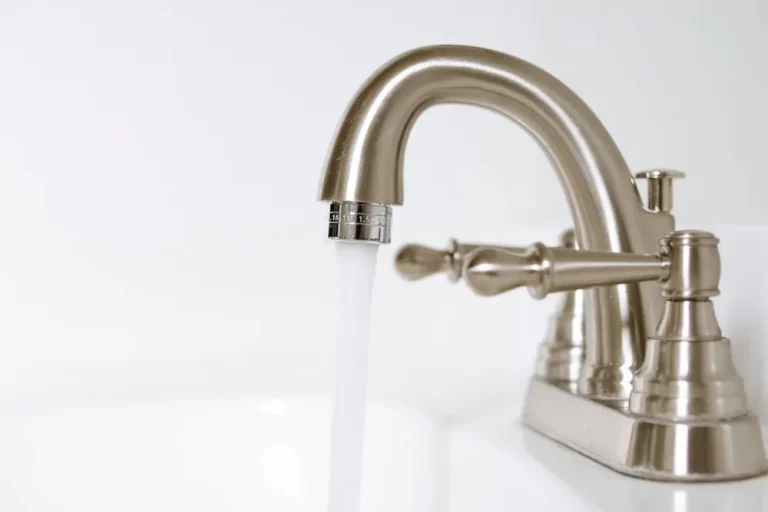Future-Proof Your Garden: How to Propagate Succulents with Tech & Sustainability
I’ve always been fascinated by how a tiny leaf can grow into a whole new succulent plant. It’s like a magic trick that nature effortlessly pulls off, and I’ve been hooked on propagating succulents ever since I discovered it. It’s not just about growing plants; it’s about sharing a piece of joy with friends, family, or anyone who’s curious about these resilient little wonders.
Starting my succulent propagation journey wasn’t easy, especially with the dry climate of Utah challenging me at every step. But through trial and error, I’ve discovered techniques that work, turning my initial struggles into a thriving garden of succulents. Whether you’re a seasoned gardener or just starting out, propagating succulents is a rewarding experience that I can’t wait to share with you.
The Basics Of Succulent Propagation
When I first started my journey into the world of succulents, one of the most exciting aspects was learning about propagation. It’s not just about growing plants; it’s about creating new life from what you already have. This section will delve into the basics of succulent propagation and explore the benefits of this rewarding gardening activity.
Understanding Succulent Propagation
Propagation is a method I use to multiply my succulent collection without having to purchase new plants. It might sound complicated, but it’s quite simple, and believe me, it’s incredibly gratifying. There are several methods for succulent propagation, but they all boil down to using a part of the plant to grow new ones.
Leaf Cuttings: This involves gently removing a leaf from the plant and allowing it to callous over before planting. It’s amazing to watch a new tiny plant emerge from a single leaf.
Stem Cuttings: By cutting a piece of the stem, letting it dry, and then planting it in soil, new roots and shoots will develop. It feels like a bit of magic every time new growth appears.
Beheading: This might sound drastic, but it’s another method where you cut the top off a succulent to encourage new growth from the base. The top part can also be replanted to create a new plant.
Benefits of Propagating Succulents
The benefits of succulent propagation are numerous, and I’ve found it to be an incredibly rewarding part of my gardening practice.
- Cost-Effective: Why buy new plants when you can create your own? Propagation has helped me expand my garden without emptying my wallet.
- Sharing is Caring: There’s nothing like sharing a propagated succulent with a friend. It’s a personal gift that continues to grow, and it’s always well received.
- Conservation: By propagating from my own plants, I’m helping to conserve rare varieties that might not be readily available in nurseries.
- Educational: The process has taught me so much about the resilience and growth patterns of these fascinating plants. Plus, it’s a great way to involve kids in gardening, sparking their interest in plant biology.
Understanding and utilizing these propagation methods has transformed my approach to gardening. It’s more than just growing plants; it’s about nurturing life and sharing the beauty of succulents with the world around me.
Preparation for Propagation
Starting your succulent propagation journey is exciting; it feels a bit like becoming a plant magician, where a single leaf can transform into a whole new plant. Let’s dive into the preparation phase, ensuring you have everything you need for successful propagation.
Selecting Healthy Leaves or Cuttings
Selecting the right leaves or cuttings is crucial. I always look for parts of the succulent that are healthy, plump, and free from any signs of disease or damage. For leaves, I gently twist them from the stem, ensuring that I get the whole leaf without tearing. This full removal is vital for the leaf to have the energy needed to sprout new roots and leaves. When it comes to stem cuttings, I choose stems that are sturdy and green. If I’m aiming for multiple plants from a single stem, I’ll use the cutting positions that promote the growth of side stems or encourage the top part of the cut to develop into a new plant. Remember, each cutting type has its ideal spot for encouraging the best growth outcome.
Tools and Materials Needed for Propagation
Before getting my hands dirty, I make sure I’ve got all the necessary tools and materials at my disposal. Here’s a quick list of what I gather:
- Sharp shears or scissors: These ensure a clean cut, which is essential for healthy propagation.
- Garden gloves: Particularly useful when handling varieties with spines or sharp edges.
- A small trowel: Handy for transferring soil or making indentations for the cuttings.
- Potting medium: A mix specifically for succulents and cacti works best, providing the drainage they need to thrive.
- Containers with adequate drainage holes: This prevents water from pooling at the bottom, which could lead to root rot.
With healthy cuttings or leaves selected and my tools and materials ready, I feel well-prepared to start the actual propagation process. The magic of seeing new growth from what was once a part of another plant never ceases to amaze me, and with the right preparation, I’m set up for success.
Methods of Succulent Propagation
Propagating from Leaves
When I start with leaf propagation, the first step is always to gently twist and pull the leaves from the stem. It’s crucial to ensure the leaf comes away cleanly, without any tearing. Once I’ve collected my leaves, I lay them out to dry in a warm, bright spot, though not in direct sunlight. This drying period allows the ends of the leaves to callus over, which usually takes about 3 to 4 days. This callousing is vital for protecting the cut from too much water absorption, which can lead to rot.
After the leaves have callused, I place them on top of well-draining succulent soil without burying them. They’re positioned so the cut end is just above the soil surface. In my experience, using a spray bottle to lightly mist the soil when it’s dry works best. This keeps the leaves hydrated without overwhelming them with water, fostering the perfect conditions for new roots and, eventually, tiny succulent plants to emerge.
Propagating from Stem Cuttings
For stem cuttings, I’ve learned that a clean, sharp cut is essential. Depending on the intended outcome, I might use different cutting positions along the stem. However, regardless of the position, preparing the cutting involves letting it dry out for a couple of days to form a callus. This process is similar to leaf propagation, aiming to prevent the cutting from absorbing too much water initially.
Once my stem cuttings have developed a hard callus, I plant them in succulent soil, ensuring the calloused end is buried. I’ve found that placing them in bright, indirect light and watering lightly once the soil dries out promotes healthy root growth. I keep an eye on them, watching for the early signs of new growth and making sure the soil moisture is balanced to avoid root rot.
Propagating from Offsets or Pups
Offsets, or pups, are little replicas of the parent plant that grow at its base. When I notice these at the base of my succulents, I know it’s time for propagation. Carefully, I use a sterile knife or scissors to separate the pups from the mother plant, ensuring each offset has enough root to establish itself independently.
After separating the pups, I allow the cut area to callus over for a day or two, similar to leaf and stem propagation. Then, I plant them in their own pots filled with succulent mix, watering lightly to encourage root growth. Offsets typically take root and grow faster than leaf and stem cuttings, making them a satisfying option for expanding my succulent collection.
Propagating in Water vs. Soil
I’ve experimented with both water and soil propagation methods for succulents. Water propagation allows for watching roots develop in real-time, which is incredibly rewarding. I simply suspend the leaf or stem cutting above water, ensuring only the cut end is submerged. Over time, roots emerge, seeking moisture.
Soil propagation, on the other hand, feels like a more natural process to me. While it doesn’t offer the visual thrill of watching roots form, it has been equally effective. Whether choosing water or soil, both methods have their place in my propagation practices, each with unique benefits and learning experiences.
Care and Maintenance of Propagated Succulents
After successfully initiating the propagation of my succulents through the methods I’ve shared, it’s crucial to focus on their care and maintenance to ensure they grow healthy and vibrant. Let’s dive into the essential components that will help these baby plants thrive.
Optimal Soil Mix for Propagated Succulents
Finding the right soil mix for propagated succulents is a game-changer. I’ve learned that these plants require a well-draining mix to prevent root rot, which is a common issue with succulents. My go-to mix includes 60% potting soil blended with 40% perlite. This combination ensures that the soil retains enough moisture for the roots to absorb what they need while excess water drains away efficiently. Sometimes, I’ll add a bit of coarse sand to the mix, especially for succulents that prefer an even more gritty environment. Remember, the goal is to mimic their natural, arid habitats where water drains quickly, and nutrients are provided in just the right amounts.
Watering Requirements for New Succulents
Watering newly propagated succulents can be a bit tricky, but I’ve found a rhythm that works well. Initially, these succulents need a light misting every few days to help their roots establish without overwhelming them with water. It’s crucial to let the soil dry out completely between waterings. After about a month, when I notice stronger root growth, I gradually increase the watering amount but decrease the frequency, aiming to soak the soil thoroughly yet allowing it to dry out completely before the next watering. This method encourages deeper root growth, making the succulents more drought-tolerant. Always use a container with adequate drainage holes to make managing moisture levels easier.
Acclimating Propagated Succulents to Sunlight
One of the most critical steps in caring for propagated succulents is gradually acclimating them to sunlight. These little plants are sensitive, especially in their early stages. I start by placing them in an area that receives indirect light for the first few weeks, avoiding any direct sunlight that can scorch their delicate leaves. Gradually, I introduce them to more light, starting with an hour of morning sun, which is gentler, and increasing it by an hour every week. This process helps them adapt without stress or damage. Once acclimated, most succulents thrive in bright, indirect light or morning sun, although it’s important to research the specific light requirements for the species you’re growing.
Troubleshooting Common Issues
When propagating succulents, sometimes things don’t go as planned. I’ve faced my share of challenges over the years but have also learned quite a bit about how to overcome them. Let me share some insights on dealing with common issues so your propagation journey can be smooth sailing.
Dealing with Non-Rooting Cuttings
Sometimes, despite our best efforts, cuttings just refuse to root. It’s disheartening, but not all is lost! The first thing I check is the moisture level of the soil. Succulent cuttings need a balance – too dry, and they won’t root; too wet, and they might rot. If the soil feels bone dry, I give it a light watering and hope for the best.
Next, I consider the cutting itself. Did I let it callous over properly before planting? A freshly cut stem might rot instead of rooting if it’s not given a few days to harden off. If I jumped the gun, I’ll try again, this time letting the cutting dry out for a few days before replanting.
I also look at the location of my cuttings. Are they getting too much direct sunlight? While succulents love the sun, newly planted cuttings prefer indirect light to avoid stress. Moving them to a spot with bright but indirect light might just do the trick.
Preventing Rot in Propagated Succulents
Rot is the bane of succulent propagation, and once it sets in, it’s tough to reverse. Prevention, however, is entirely within our control. The key? Proper soil and watering practices.
Soil: I always use a well-draining soil mix for succulents. A mix of potting soil, perlite, and a bit of coarse sand works wonders. This ensures that water runs through quickly, not allowing moisture to linger around delicate roots.
Watering: Overwatering is a common mistake. I water my succulent cuttings sparingly, allowing the soil to dry out completely between waterings. This simulates the dry conditions most succulents are accustomed to in their natural habitats.
Air circulation: Good airflow around the planting area also helps keep moisture levels in check. I try not to overcrowd my propagated succulents, giving each cutting enough space to “breathe.”
Advanced Tips for Successful Propagation
Diving deeper into the world of succulent propagation, I’ve learned a few advanced techniques over the years that have really upped my game. If you’re like me and always looking for ways to improve your succulent propagation success rate, these next tips might just be what you need.
Using Growth Hormones for Faster Rooting
One of the game-changers for me was starting to use growth hormones. These aren’t as scary as they sound, I promise! Growth hormones, or rooting hormones, are substances that encourage faster rooting in plant cuttings. They come in different forms – powders, gels, and liquids – and applying them is a breeze. Here’s the gist: after cutting your succulent stem or leaf, just dip the cut end into the hormone before planting it in the soil. It’s like giving your cuttings a little booster shot that helps them develop strong roots more quickly. Just remember, a little goes a long way, so use them sparingly. Also, it’s crucial to stick to the instructions on the product you choose to avoid any mishaps.
Creating a Humidity Dome for Propagated Succulents
Let’s talk about humidity. Succulents love it, especially in the early stages of propagation. One method I’ve found incredibly helpful is creating a humidity dome. This might sound fancy, but it’s actually quite simple. All you need is a plastic container or even a clear plastic bag that can cover your cuttings. By placing your newly cut and planted succulents under this dome, you’re essentially creating a mini-greenhouse that keeps the humidity high and provides an ideal environment for rooting and growth.
The trick is to ensure there’s enough air circulation to prevent mold and rot, so opening the dome once a day for a few minutes is a good idea. Also, keep the setup in a place that gets bright, indirect sunlight. The combination of humidity and light under the dome can significantly speed up the rooting process.
Conclusion
I’ve really enjoyed diving into the future of succulent propagation with you. It’s clear that with the integration of technology like LED lights and hydroponics, along with the smart application of AI, we’re on the brink of some exciting advancements. But what’s even more inspiring is how these innovations are being balanced with a strong commitment to sustainability. From organic potting mixes to water-saving techniques and community projects, it’s heartening to see a path forward that not only embraces the future but does so with an eye on preserving our planet. I can’t wait to see how these trends evolve and how they’ll shape our succulent gardens. Happy propagating!
FAQ – Frequently Asked Questions
What are the 4 basic ways of propagating succulents?
Succulents can be propagated through offsets, leaf cuttings, stem cuttings, or seeds from a mature plant. Despite the simplicity of the process, success rates can vary among different succulent species.
Can you put succulent cuttings straight into soil?
Yes, succulent cuttings can be placed directly into the soil. However, it’s essential to allow the cut end to dry or callus for a few days up to a week before planting to prevent rotting.
Can I propagate a broken succulent?
Yes, a broken succulent can often be propagated successfully. Treat the broken piece as a cutting by letting it callus over for a few days before placing it in soil or an appropriate growing medium.





